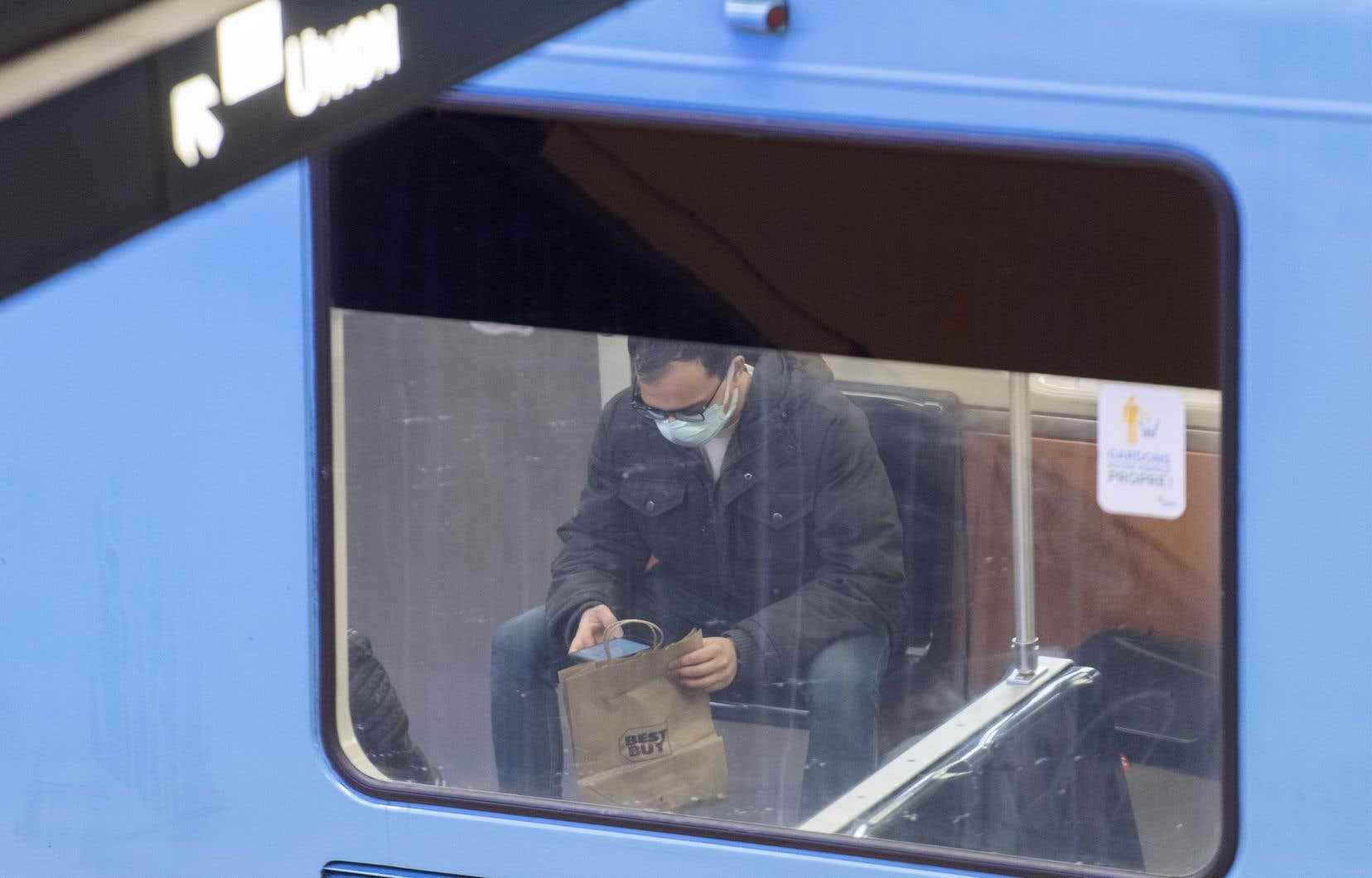The Société de transport de Montréal (STM) estimates that the arrival of the Réseau express métropolitain (REM) from the east will lead to an increase of approximately 4,000 passengers during rush hour on the metro’s green line. It should be able to absorb this increase in ridership, but it will be necessary to quickly start work to replace the old MR-73 cars with Azur trains, warns the STM.
In a preliminary analysis report published Friday, at the same time as that of the working group on the REM de l’Est, the STM indicates that at present, the capacity of the green line is 23,300 passengers during rush hour when the current ridership is 18,500 passengers.
According to the STM, the capacity of the green line could be increased by 8,700 passengers, a gain of 37%, thanks to various measures including increasing the frequency of service and replacing MR-73 cars with Azur cars from larger capacity boa type.
“The green line of the metro still has a significant residual capacity which should be sufficient for at least ten years”, specifies the report, while pointing out that with the arrival of the REM from the East, it will be necessary accelerate the deployment of new measures to increase its capacity. The acquisition of Azur trains, necessary in 2036 at the latest, should make it possible to respond to the increase in ridership following the commissioning of the REM de l’Est, it is believed.
But to replace the MR-73, whose useful life will end in 2036, the STM will have to build a new Beaugrand complex and modify the rear station and the Angrignon garage. “The set of solutions to be put in place represents a considerable modernization project for the green line, and by extension for the entire Montreal metro network. This project will make it possible to increase the capacity of the green line but also, simultaneously, to maintain its reliability, improve its performance and improve the customer experience,” it is pointed out.
Replacing the MR-73s won’t be easy. The STM therefore recommends launching, as of 2023, the planning of the MR-73 replacement project as well as the studies necessary to specify the deadlines. She suggests quickly creating a project office for this purpose. The replacement of the 360 MR-73 cars alone is estimated at 2.9 billion dollars, to which must be added the construction of the Beaugrand complex (700 million), the modification of the rear station and the Angrignon garage (300 million) in addition to the replacement of train control on the green line (1.5 billion).
Several scenarios for the Eastern REM
The working group led by the Autorité régionale de transport métropolitain and mandated by the Legault government to examine several scenarios concerning the future REM de l’Est, also released its preliminary report on Friday.
He first focused on the main branches, the one north to Cégep Marie-Victorin, and the other east to Pointe-aux-Trembles.
It should be remembered that in May 2022, Quebec City withdrew the REM de l’Est project from the hands of CDPQ Infra in order to entrust it to the ARTM, amputating it at the same time from the aerial section in the city center which had aroused strong opposition.
The committee believes that the Lacordaire axis, ie the northern branch from Cégep Marie-Victorin, does not suggest any major issue since it was already planned underground, which promotes better urban integration. The quality of the rock in this sector should not cause problems for the construction of a tunnel, we add.
As the Minister of Transport for Sustainable Mobility, Geneviève Guilbault, indicated on Monday, the option of an aerial REM in the Mercier-Est sector has been abandoned “given the major issues of urban integration and acceptability in the Mercier sector”. In this regard, the working group examined several tunnel scenarios, one in the axis of Sherbrooke Street and the other in the axis of Hochelaga Street with a connection to the L’Assomption metro station. The first option, in the Sherbrooke axis, would also allow a connection with the Honoré-Beaugrand station.
In the segment further east, towards Pointe-aux-Trembles, the working group examined the scenario of an aerial REM.
Overall, the committee estimates the expected ridership at peak times for the future REM de l’Est at 18,800 passengers and assesses a modal transfer of 19% of users who will abandon their car for public transit.
Extensions
The working group was also mandated to look into future extensions of the project to Rivière-des-Prairies, Laval and Lanaudière. A REM that would go to Boulevard Rodolphe-Forget would boost ridership by 4,000 passengers, an increase of 20%. Towards Laval, the addition of passengers would vary from 1,000 to 1,800 additional users depending on the sector served. Towards Lanaudière, with a section of 19.7 km and 2 stations in addition to the three existing stations, the increase is estimated at 2,100 users. “However, this addition of 2,100 users remains relatively low compared to the other components of the project, given the length of the extension to be built and operated,” the report states.
Towards Mascouche, the REM, which is automated, could not use the existing Canadian National tracks, it is reported.
The working group’s final report is expected next June.
